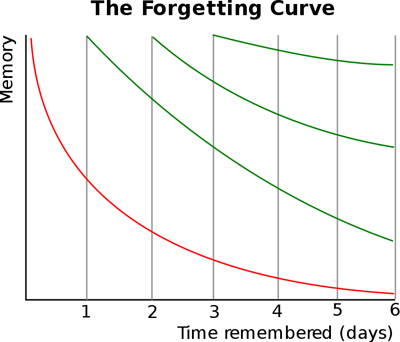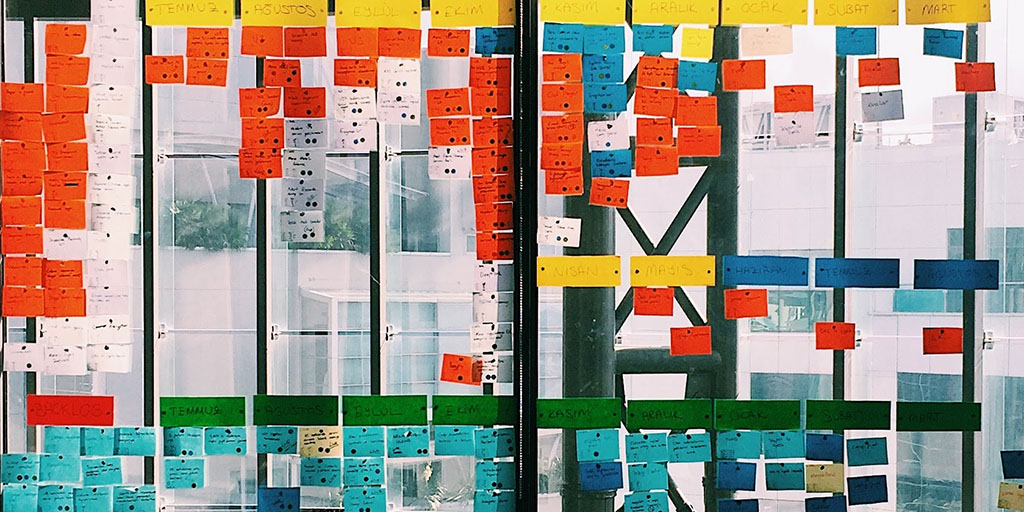Given the costs of implementing a corporate learning program, many organizations literally cannot afford for employees to forget the knowledge they gain from training resources. So how can educators increase the amount of information that learners retain? The answer is sticky learning.
Sticky learning theories focus on arguably the most important aspect of learning success: information retention. Essentially, the more efficiently and consistently learners can transfer information from short to long term memory, the more successful they become at reseting the brain’s natural forgetting curve, and retaining what was learned in training sessions.
Educators achieve this dynamic through the strategic repetition of course content. You’ve heard of the ten-thousand-hour rule - the idea that the right kind of practice, performed for sufficient time, will lead to mastery. Sticky learning is L&D professionals’ answer to how this approach might be implemented under time constraints - in other words - optimizing the learning curve to help learners progress from uncertainty, to proficiency, to expertise, all via the fastest pathway.
Watch the Master Class on The Sticky Learning Knowledge Boosters Your eLearning Needs!
Remembering more from a training course is not just beneficial to learning success. It also reflects well on the learning experience itself. Learners are more likely to identify positively with the training they receive, as well as increasing the prospect of future engagement in training. As this Ted Talk (TEDxKitchenerED), Spiraling the Curriculum to Get Sticky Learning by Kristin Phillips explains , sticky learning supplies users with those endorphin-boosting moments of ‘hey, I remember this topic/skill/solution!’ The best sticky learning approaches not only look to steepen learning curves. They also aim to lessen the forgetting curve - the rate at which information is lost over time. This is all about the conscious renewal of information in the days immediately following a learning event.
 Graph: A typical forgetting curve. Repeated conscious renewal of information is an effective retention strategy. [Wikipedia Commons, Public domain].
Graph: A typical forgetting curve. Repeated conscious renewal of information is an effective retention strategy. [Wikipedia Commons, Public domain].
While the method of repetition will vary depending on the educational context, the key to sticky learning is delivering the repetition of learned information over an incremental period. The task facing educators who are interested in developing a sticky learning curriculum is, therefore, to decide on two things:
- Which areas of information are most critical for learners to retain?
- Given my learners’ needs, what is the most effective schedule for reviewing this information
Once the answers to these questions are developed, sticky learning can be implemented across training programs. This includes pre-class, during learning itself, and - most importantly - beyond the completion of a course.
Pre-learning
At this stage, sticky learning is about setting expectations. Ask learners what they hope to gain from training, perhaps through a questionnaire or pre-class email. Adding this kind of clarity to training, right from the start, helps to optimize initial sessions and avoid confusion.
Mid-stream
Maintain momentum throughout the learning experience through mini-quizzes or gamification (and click here to learn 4 Ways to Use Gamification to Measure Engagement). By testing immediate knowledge acquisition, educators can signal to learners the need to activate the brain for long-term retention, before the task of post-learning repetition begins. Another effective method of doing this is to create small discussion groups, where learners relay their understanding of topics to each other.
Post-learning
After the training session is where the theories behind sticky learning really begin to kick in. Educators create a schedule of repetition and review, guiding learners in their information retention through whatever learning strategies are appropriate. That might include social learning, blended learning, or other independent learning approaches.
Whatever learning strategies are leveraged to support sticky learning, efforts to optimize student learning curves are often among the most appreciated of all contributions made by educators. If you’re looking to implement learner retention strategies within your training program, take a look at this free master class:
The Sticky Learning Knowledge Boosters Your eLearning Needs, for a deeper insight into sticky learning. Watch Now!
Whether you’re looking to implement sticky learning for your Learning Management System, are looking to optimize your LMS and eLearning programs with learning analytics, or need any other eLearning solutions for eCommerce, we have the expertise to help you reach your goals.
Contact us today. We’d love to help you create a better way to learn!
Disclaimer: This article was contributed by guest blogger Joe Hitchcock. Joe is a content writer from Vancouver BC, interested in culture, education and fiction. The views and opinions expressed belong to the guest blogger alone, and do not necessarily reflect the official policies or opinions of Lambda Solutions.






